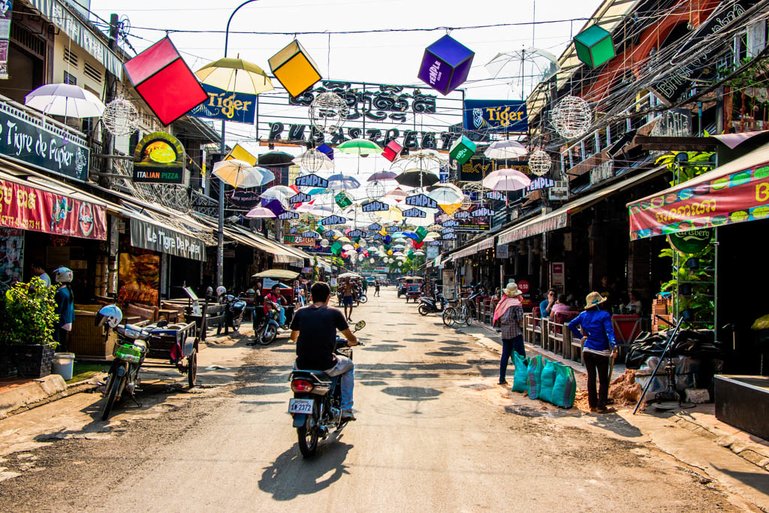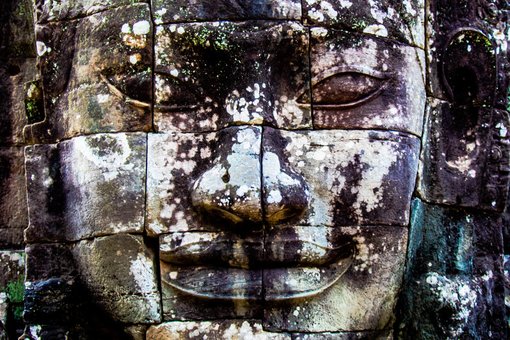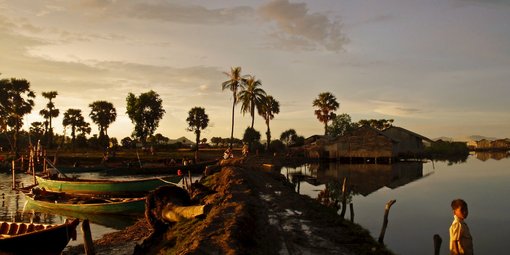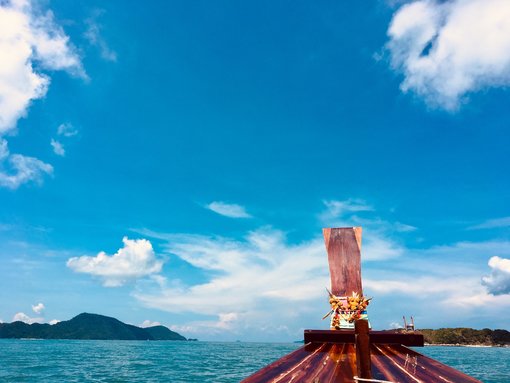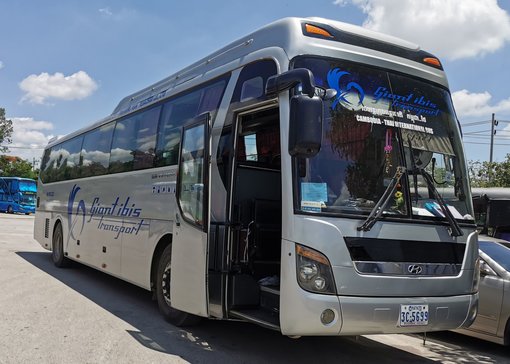A return to Siem Reap in Cambodia after almost 20 years, to revisit the Temples of Angkor. But there's more to Siem Reap than just temples.
Cambodia
Modern-day Cambodia is all that’s left of the mighty Khmer Empire, which once ruled much of what is now Thailand, Laos and Vietnam. Today, Cambodia’s 180,000 square kilometres are bound by Thailand to the west and northwest, Laos to the north, Vietnam to the east and southeast, and the Gulf of Thailand ocean to the southwest.
From my first visit I remember Cambodians as being among the most friendly and welcoming people I’d come across in Asia. Some might find that a little surprising given the country’s tragic recent past. In the late seventies, Pol Pot and the Khmer Rouge were responsible for the Cambodian genocide where almost a quarter of the population lost their lives. But somehow the people have prevailed with their smiles intact. And I was looking forward to experiencing their warm hospitality again.
Siem Reap
Siem Reap is in the northwest of Cambodia around 150km from the Thai border. It’s best known for being the gateway city to the ancient temples of Angkor (the former capital of the great Khmer Empire). But today there’s much more to Siem Reap. Since my first visit 16 years ago, it’s become a thriving cosmopolitan city, with a great cafe and restaurant culture, and a pretty diverse nightlife. It has a charming blend of colonial and Chinese style architecture. And with a variety of museums and cultural shows, there’s plenty to keep you busy for when you’re templed out. It’s also a stepping stone to the nearby Tonle Sap Lake, the largest freshwater lake in Southeast Asia, with its traditional floating villages.
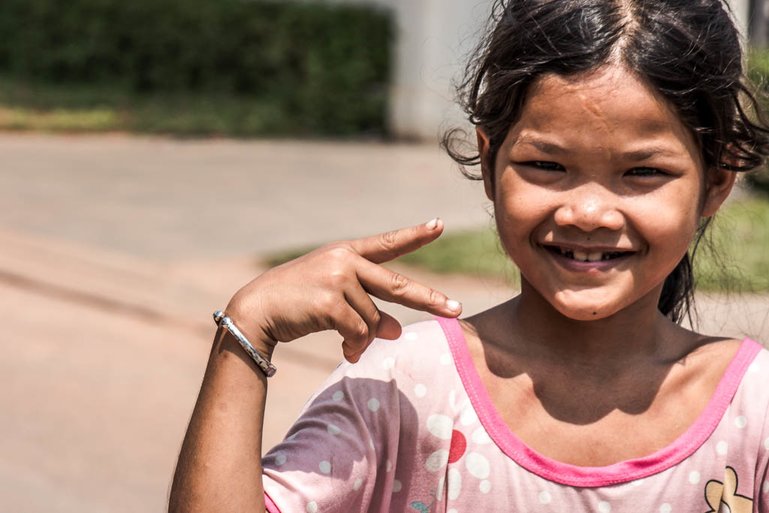
Young Siem Reap girl displaying the Cambodian spirit
When I wasn’t visiting the temples, I enjoyed exploring the city on foot. My hotel was around 10 minutes walk from the Siem Reap river, on the east side. It was a pleasant walk from the hotel to the river, along quiet roads, passing homes and sleepy cafes. Directly on the river banks on this side, there’s a decidedly rural feel, with old shacks, and chickens running freely. There’s also the familiar red soil roads which seem to be characteristic of this part of the country. Smearing the buildings and passing traffic with a layer of red dust… symbolic to me of the country’s troubled history.
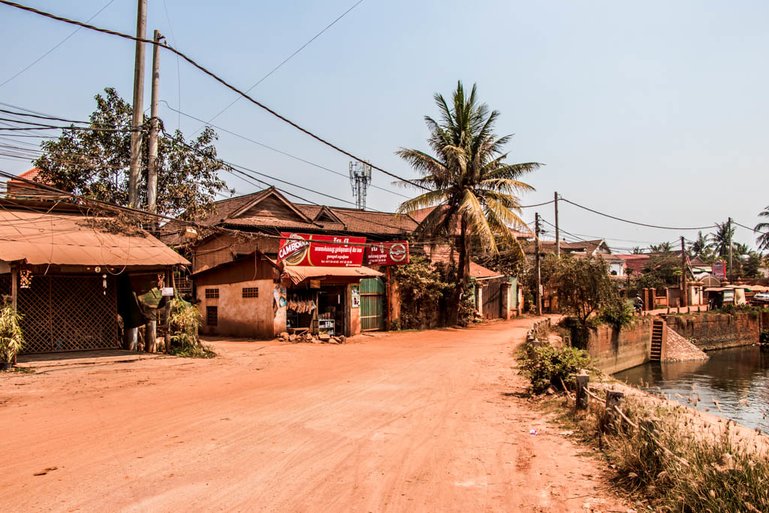
The characteristic red soil on the quieter east bank of the Siem Reap river
Siem Reap Markets
Further up the river towards the Vishnu Circle (or Hard Rock) roundabout you come to the Siem Reap Art Center. It’s a night market but parts of it are open by day selling a range of handicrafts and souvenirs. It’s still pretty subdued during the day on this side of the river, with not so many tourists, and remork-moto (tuk tuk) drivers napping and playing on their mobiles.
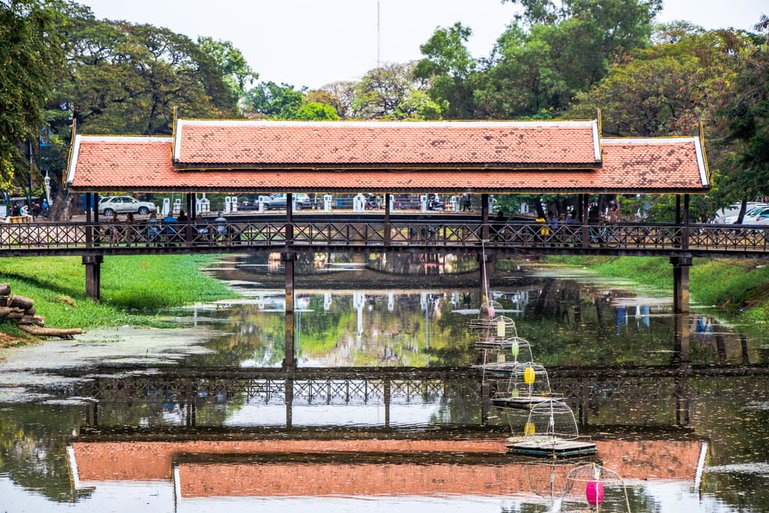
Traditional wooden bridge connecting the Art Market with Psar Chaa
The Art Market is connected to the Psar Chaa, Old Market area via a traditional wooden bridge across the Siem Reap River. The bridge is a pleasant spot to shelter for a while from the heat of the Cambodian sun. You can sit here in the shade beneath the red-tiled roof and cool off for a bit, enjoying the breeze and river view.
Venturing across the river things start to get busier. Psar Chaa is a completely different experience. It’s a bustling market selling anything you could ask for and one of the most popular shopping experiences for visitors. You can spend hours (and I did) getting lost here and observing the everyday hustle and bustle of Cambodian market life.
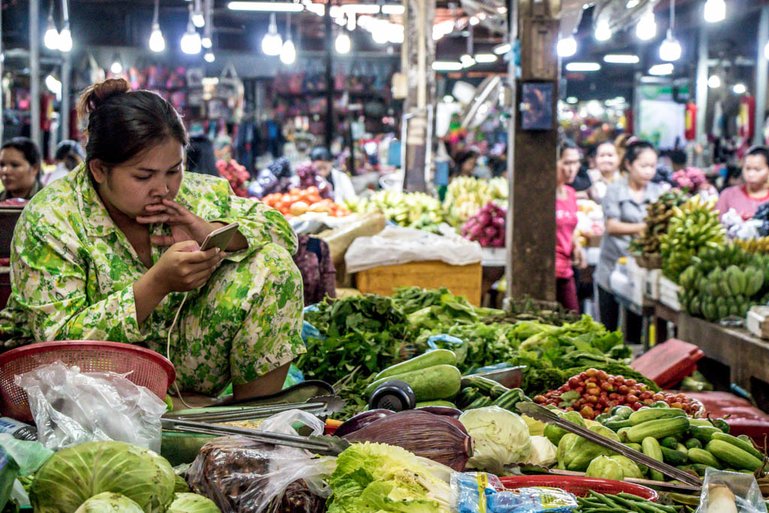
Fruit & Veg at Psar Chaa Old Market
Stumble out of the market and you’re in the tourist epicentre of Siem Reap, with its many cafes, bars, restaurants and shops. Here you’ll notice a stark difference to the other side of the river, with busy roads full of bikes, buses, and lined with street vendors.
Siem Reap Nightlife
Just one street up from Psar Chaa is Pub Street, Siem Reap’s equivalent to Bangkok’s Khao San Road. A vibrant street filled with cheap bars, international restaurants, boutiques and massage parlours. It’s busy by day, but really comes alive at night when it is the place to go for some Siem Reap nightlife. Some places stay open as late as 4am.
The Old French Quarter
Walk north up Sivatha Boulevard at one end of Pub Street and you’ll come across the Old French Quarter in Siem Reap. I didn’t venture up this far but here you’ll find some charming vintage colonial buildings and luxury accommodation.
Eating & Sleeping In Siem Reap
Where To Eat & Drink
There are a huge variety of places to eat and drink in Siem Reap. With a range of cuisines from Asian and European to authentic Khmer. Here are just a few places I (mostly) enjoyed.
Sister Srey Cafe
Sister Srey Cafe is a lovely little riverside cafe in the old market area. It’s also an environmentally conscious social enterprise. They employ young Khmer students, and help support them through university and higher education. A percentage of their profits also go towards APOPO to help support landmine clearance.
>> Google Map
Spoons
Spoons restaurant is on the eastern (Wat Damnak) side of the Siem Reap river. Set in a unique bamboo structure, the restaurant has a lovely vibe while serving beautifully presented authentic Khmer cuisine with a twist. It also serves as a training school for underserved young adults in Cambodia.
>> Google Map
Fifty5 Kitchen-Bar
Situated in a great spot on a corner next to the old market and not far from Pub Street. Fifty5 Kitchen-Bar is a contemporary bar/restaurant serving a good range of western and Khmer dishes. And an extensive Gelato menu. It’s a stylish place with a cool atmosphere and an eclectic furniture mix of wooden and metal chairs and Chesterfield sofas. The tables on the pavement outside provide a great setting for a chilled afternoon or evening of people watching.
>> Google Map
The Red Piano
Located on the crossroads at the western end of Pub Street, The Red Piano is a great little hangout to sit back in and soak up the atmosphere of Siem Reap’s most popular night time street. It offers a good selection of international and Khmer dishes. And also has a wide selection of Belgian beers. Inside there’s a funky red interior, with some cool but slightly creepy red floor-standing lamps, while the outdoor canopied area with its wicker chairs has more of a colonial feel.
>> Google Map
Khmer Kitchen
The Khmer Kitchen; Not exactly a recommendation this one. I had the worst case of food poisoning I’ve ever had from here… it knocked me out for a whole day! I had the Chicken Amok curry and it tasted a bit ‘odd’… so my own fault for eating it I guess. But it’s a busy place, in a good spot on the corner opposite the old market, great for people watching. Plenty of people seem to like it (it has many good reviews). But dine here at your peril!
>> Google Map
Where To Sleep
Siem Reap offers a wide range of accommodation options, from charming guesthouses and boutique hotels to large 5-star resorts. On this trip though, I stayed in just the one place.
Hillocks Hotel & Spa
Hillocks Hotel & Spa is a great value, beautifully designed, modern boutique hotel on the east side of the Siem Reap river. Set within graceful gardens, with an infinity pool overlooking neighbouring rice fields, it’s a calming retreat from the heat of the temples.
>> Google Map
Siem Reap & Cambodia Today
My Thoughts
Siem Reap has changed a bit since my last visit at the turn of the millennium. It’s no longer the sleepy little town I remember. Today it’s a bustling cosmopolitan city. There certainly wasn’t the cafe and restaurant culture then that there is now. And no boutique hotels that I remember. My accommodation back then was pretty basic as I recall.
Before when I came, most Cambodians I met had a story to tell. It was rare to find someone who hadn’t been affected by the Pol Pot genocide, someone who hadn’t lost a brother, a sister, their father or mother, or worse their whole family. This time it seemed different. But perhaps that’s because more than half the population are 25 or younger. It may not be talked about so much. But I think the effects of the genocide are still present today, as the country continues to rebuild its economy, schooling, and social institutions. Those who were targeted by the Khmer Rouge were the educated classes, leaving Cambodia’s population today young and largely uneducated. Many are orphans. But enterprises like Spoons restaurant and Sister Srey Cafe are providing admirable ways of helping this young generation in life changing ways. And that can only be a good thing.
